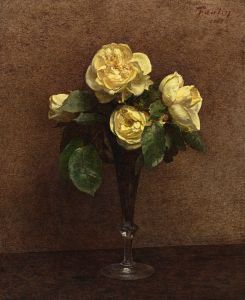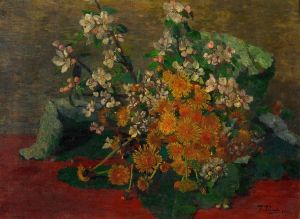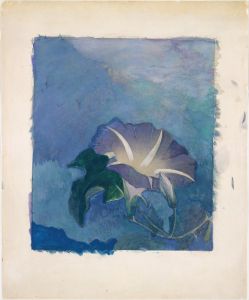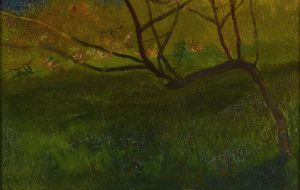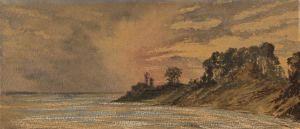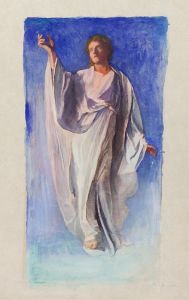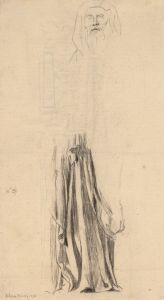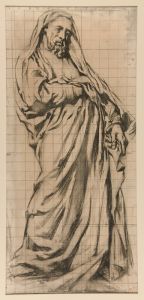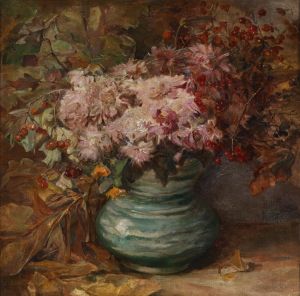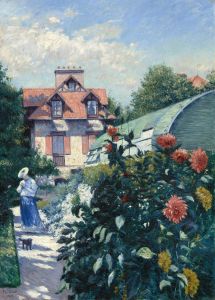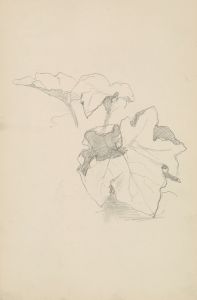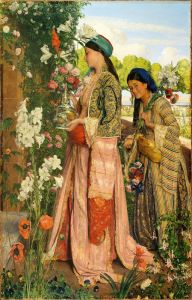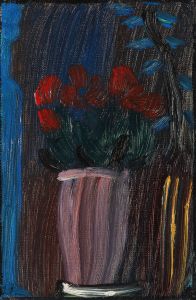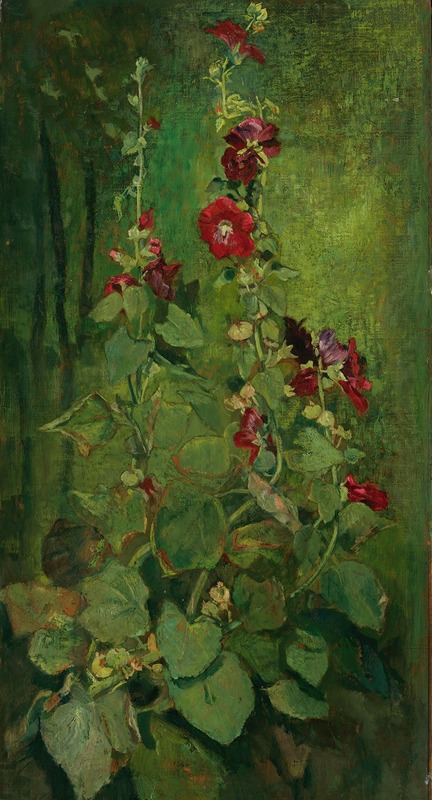
Red Hollyhocks
A hand-painted replica of John La Farge’s masterpiece Red Hollyhocks, meticulously crafted by professional artists to capture the true essence of the original. Each piece is created with museum-quality canvas and rare mineral pigments, carefully painted by experienced artists with delicate brushstrokes and rich, layered colors to perfectly recreate the texture of the original artwork. Unlike machine-printed reproductions, this hand-painted version brings the painting to life, infused with the artist’s emotions and skill in every stroke. Whether for personal collection or home decoration, it instantly elevates the artistic atmosphere of any space.
"Red Hollyhocks" is a painting by the American artist John La Farge, who was a prominent figure in the American art scene during the 19th century. La Farge was known for his innovative use of color and light, as well as his contributions to the development of stained glass art in the United States. His work often explored themes of nature, spirituality, and the interplay of light and color.
Created in 1863, "Red Hollyhocks" is an example of La Farge's early work, showcasing his interest in floral subjects and his skill in capturing the delicate beauty of flowers. The painting depicts a cluster of hollyhocks, a tall flowering plant known for its vibrant colors and large blooms. La Farge's attention to detail and his ability to render the subtle variations in color and texture of the petals are evident in this piece.
La Farge's approach to painting was influenced by his studies in Europe, where he was exposed to the works of the Old Masters and the emerging Impressionist movement. However, he developed a unique style that combined elements of realism with a more expressive use of color and light. In "Red Hollyhocks," La Farge employs a rich palette to convey the lushness of the flowers, using deep reds and greens to create a sense of depth and vitality.
The composition of "Red Hollyhocks" reflects La Farge's interest in Japanese art, which he admired for its simplicity and elegance. The influence of Japanese aesthetics can be seen in the painting's balanced composition and the way the flowers are arranged to create a harmonious and pleasing visual effect. This interest in Japanese art was part of a broader trend among Western artists during the 19th century, known as Japonisme, which had a significant impact on the development of modern art.
John La Farge's work, including "Red Hollyhocks," played a significant role in the American Aesthetic Movement, which emphasized beauty and craftsmanship in art and design. His paintings and stained glass designs were celebrated for their artistic merit and their ability to evoke a sense of wonder and contemplation.
Today, "Red Hollyhocks" is appreciated not only for its artistic qualities but also for its historical significance as part of La Farge's body of work. It serves as an example of his early exploration of floral subjects and his mastery of color and light. La Farge's contributions to American art, particularly in the realm of stained glass, continue to be recognized and studied by art historians and enthusiasts.
While "Red Hollyhocks" may not be as widely known as some of La Farge's other works, it remains an important piece that reflects his artistic vision and his ability to capture the beauty of the natural world. Through his innovative techniques and his dedication to exploring new artistic possibilities, John La Farge left a lasting legacy that continues to inspire and influence artists today.





